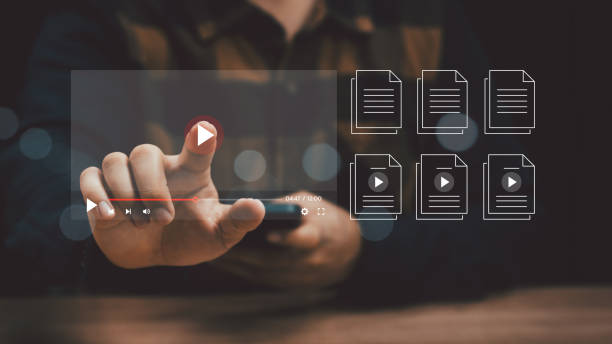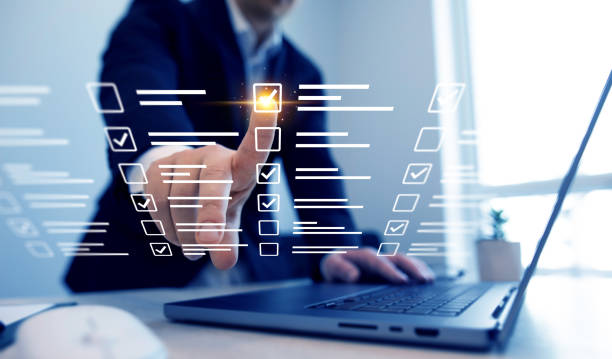Introduction to On-Page SEO and Its Importance
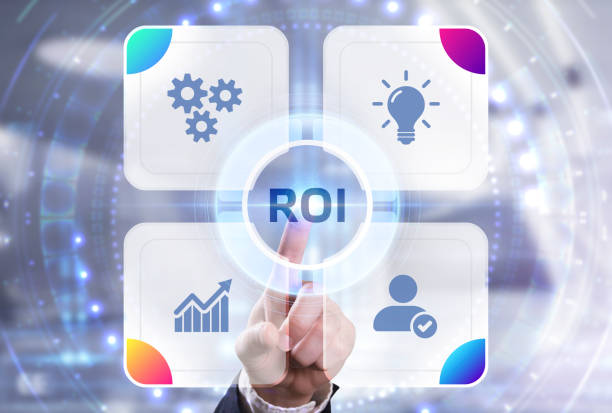
In today’s competitive web world, online presence is not limited to just having a website; it requires visibility and reaching target audiences.
This is where #Internal_SEO or #On_Page_SEO plays a pivotal role.
On-page SEO refers to a set of actions performed within your website to optimize your pages for search engines and users.
These actions include optimizing keywords, content, URL structure, images, and internal links.
The main goal of on-page SEO is for search engines to better understand your content and find it relevant to user searches, which ultimately leads to an increase in search rankings.
The importance of this type of optimization is undeniable, because even the best content, if not properly optimized for search engines, may never reach its target audience.
Without a strong on-page SEO strategy, your efforts to produce content and attract traffic may be in vain.
This is a vital part of search engine optimization that must be done carefully and with sufficient knowledge.
A deep understanding of how Google’s algorithms work and user needs is the foundation for success in this field.
This descriptive and educational section reveals the fundamental importance of internal website optimization.
Research shows that 80% of customers trust companies with professional websites more. Does your current website inspire this trust?
With Rasaweb’s corporate website design services, permanently solve the problem of customer distrust and a weak online image!
✅ Create a professional image and increase customer trust
✅ Attract more sales leads and business growth
⚡ Get free consultation
Keyword Research: The Backbone of On-Page SEO

The first step in any successful on-page SEO strategy is keyword research.
This specialized process involves identifying the phrases and words that users employ when searching for information, products, or services related to your business.
Choosing appropriate keywords helps search engines correctly categorize your content and display it to relevant audiences.
You should look for keywords that have both a good search volume and reasonable competitiveness.
Tools like Google Keyword Planner, Ahrefs, Semrush, and Moz Keyword Explorer can be very helpful at this stage.
After identifying primary keywords, you should also consider LSI (Latent Semantic Indexing) keywords or semantically related keywords, which help enrich the content and provide more comprehensive topic coverage.
For instance, if your main keyword is “website design,” LSI words could include “responsive website,” “user experience,” or “website speed optimization.”
This analytical approach indicates to Google that your content is highly comprehensive and has addressed all aspects of the topic.
With a deep understanding of keywords, you can design your content structure to be both appealing to users and understandable to search engines.
This is the foundation of any on-page SEO optimization, and ignoring it can seriously harm your performance.
This is a specialized guide that helps you firmly build the foundations of your internal website optimization.
Optimizing Title Tags and Meta Descriptions and Their Role in On-Page SEO
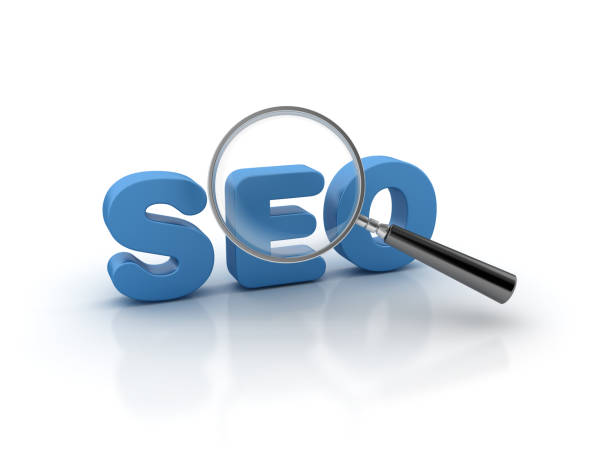
One of the most important elements in on-page SEO is the optimization of Title Tags and Meta Descriptions.
A title tag is the title that appears in the browser tab and also in search results.
This is the first thing a user sees in search results and has a significant impact on the click-through rate (CTR).
It should include the page’s main keyword and be engaging, concise, and clear (usually between 50 and 60 characters).
Meta descriptions are also a short summary of the page’s content displayed below the title in search results.
Although not a direct ranking factor, they significantly influence the click-through rate as they encourage users to click on your link.
They should include keywords, a call to action (CTA), and be compelling (usually between 150 and 160 characters).
Smart use of these two elements can significantly increase your organic traffic.
Incorrect optimization can lead to your page being ignored in search results, even if you have excellent content.
This section of on-page SEO requires precision and creativity.
For example, you can use the table below to compare best practices:
| Element | Ideal Length | Impact on On-Page SEO | Key Points |
|---|---|---|---|
| Title Tag | 50-60 characters | Most important ranking factor and CTR | Must include main keyword, be engaging and unique |
| Meta Description | 150-160 characters | Indirect impact on ranking, increases CTR | Must include keywords, a call to action, and content summary |
Title tags and meta descriptions act as the storefront for your content in search results, and therefore, their precise optimization is vital for success in on-page SEO.
This is an educational guide for correctly optimizing vital on-page SEO elements.
The Importance of Content Quality and Structure in On-Page SEO

Content is king, and this principle holds truer than ever in on-page SEO.
Producing high-quality, comprehensive, unique, and valuable content for users is the cornerstone of any successful internal website optimization strategy.
Your content should not only answer user questions but also anticipate their needs and provide information beyond their expectations.
Criteria such as E-A-T (Expertise, Authoritativeness, Trustworthiness), meaning expertise, authority, and trustworthiness, are highly regarded by Google.
This means that your content should be written by experts, have a credible source, and be trustworthy for users.
In addition to quality, content structure is also of high importance.
Correct use of Heading tags (H1, H2, H3, etc.) helps organize content and improves readability for both users and search engine crawlers.
H1 should be used for the main title of the page and include the main keyword.
H2 and H3 are used for subheadings and sub-sections, which can include related keywords.
Using short paragraphs, lists, quotes, and relevant images also helps increase readability and visual appeal of the content.
Explanatory and guiding content should be clearly presented so that users can easily access the information they need.
Good content not only boosts your ranking but also encourages users to spend more time on your site and interact with it, which is a positive signal for Google’s algorithms in on-page SEO.
This is an analytical approach for a deeper understanding of content quality in on-page SEO.
Do you dream of a thriving online store but don’t know where to start?
Rasaweb is your comprehensive e-commerce website design solution.
✅ Attractive and user-friendly design
✅ Increased sales and revenue⚡ Get free consultation
Internal Linking and Its Importance in On-Page SEO
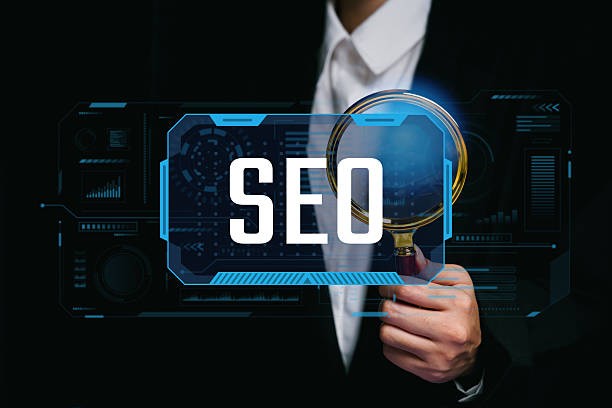
Internal linking is one of the fundamental and often overlooked pillars of on-page SEO that can significantly impact the distribution of ranking power (PageRank) within your site.
This process involves creating links from one page on your site to another page on the same site.
Its primary goal is to help search engines understand your site’s structure and discover new pages, as well as transfer link equity between pages.
Furthermore, internal links also improve user experience (UX), as they allow users to easily navigate your site and access relevant information.
When creating internal links, using descriptive and relevant anchor texts is very important.
Instead of using generic phrases like “click here,” use words that accurately describe the content of the destination page and include relevant keywords.
This helps Google better understand the topic of the destination page.
Your internal link structure should be logical and hierarchical, such that more important pages on your site receive more internal links.
This is similar to a pyramid where main pages are at the top and link to more granular pages.
Also, be wary of broken links that can harm your user experience and on-page SEO.
Regular checking and fixing of broken links is essential.
A strong internal linking strategy not only helps improve rankings but also makes users stay longer on your site and interact more, which is another positive signal for search engines.
This is a practical guide to improving your site’s structure from an on-page SEO perspective.
Optimizing Images and Multimedia Files for On-Page SEO

Images and other multimedia files like videos play an important role in the visual appeal and user experience of a website.
But beyond aesthetics, optimizing them for on-page SEO is also crucial.
The first and most important step is image compression without significant loss of quality.
High-volume images can severely reduce page load speed, which is a significant ranking factor and also a vital factor for user experience.
Tools like TinyPNG, Compressor.io, or newer image formats like WebP can be helpful in this regard.
After compression, it’s time for appropriate file naming.
Use descriptive names containing relevant keywords instead of generic names like “image001.jpg.”
For example, “seo-dakheli-strategy.jpg” is better than “img_123.jpg.”
Next, add the Alt tag (Alternate Text).
The Alt tag is a textual description for an image that is displayed when the image fails to load or for visually impaired users (by screen readers).
Search engines also use this tag to understand the image’s content, so be sure to include relevant keywords but avoid keyword stuffing.
For example, the Alt Text for an image illustrating internal SEO training could be “Internal SEO strategy diagram.”
Using image titles (Title Attribute) can also be useful, although its impact on SEO is less than that of Alt Text.
By following these tips, you not only improve your site’s speed but also enhance the discoverability of your images in Google Image Search and correctly implement another important factor of on-page SEO.
This educational section helps you perform the necessary optimizations for your internal website optimization.
Technical Aspects of On-Page SEO: Enhancing User Experience
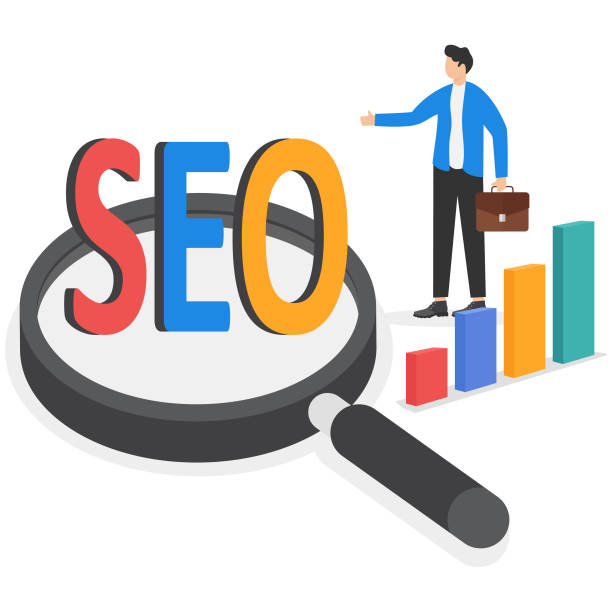
Alongside content and structure, technical aspects also play a vital role in on-page SEO, directly impacting user experience and, consequently, site ranking.
One of the most important of these is Page Load Speed.
Google is increasingly focusing on site speed, especially with the introduction of Core Web Vitals.
Factors such as LCP (Largest Contentful Paint), FID (First Input Delay), and CLS (Cumulative Layout Shift) are metrics Google uses to evaluate your site’s visual experience, interactivity, and layout stability.
Optimizing images, reducing CSS and JavaScript code, and utilizing caching and CDN (Content Delivery Network) can help improve site speed.
The next point is Mobile-Friendliness.
Given the increasing use of mobile for searching, having a responsive website that displays well on all devices is essential.
Google uses a Mobile-First Indexing approach, meaning it prioritizes your site’s mobile version for indexing and ranking.
Structured Data also helps search engines better understand your content and display it in richer formats (like Rich Snippets) in search results.
Using appropriate Schema Markup can increase your CTR.
These specialized points, although seemingly complex, are essential for a comprehensive on-page SEO strategy.
For a better understanding of the technical aspects, you can refer to the table below:
| Technical Factor | Impact on On-Page SEO | Optimization Tips |
|---|---|---|
| Page Load Speed | Important ranking factor, UX improvement | Image compression, caching, CDN, code optimization |
| Mobile-Friendliness | Essential for mobile indexing and ranking | Responsive design, test with Google Mobile-Friendly Test |
| Structured Data | Helps search engine, displays Rich Snippets | Use Schema Markup (e.g., Product, Article) |
These aspects are vital to ensure your site is optimized not only for users but also for search engine crawlers, forming a significant part of on-page SEO.
This specialized and analytical information is essential for improving your site’s technical performance in on-page SEO.
User Experience and Engagement as Effective Factors in On-Page SEO
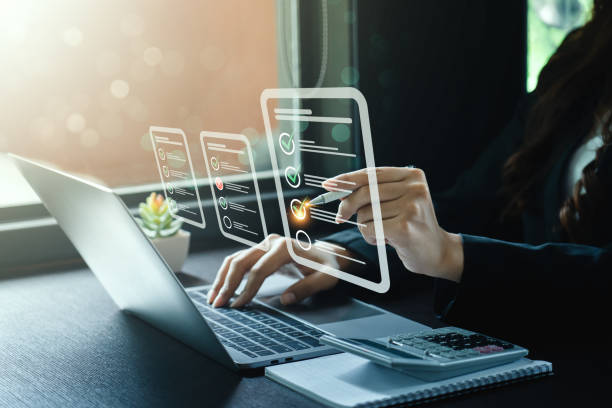
Search engines, especially Google, are increasingly emphasizing user experience (UX) and user engagement metrics as ranking signals.
A website with strong UX encourages users to spend more time on the site, visit more pages, and have a lower bounce rate.
These signals indicate to Google that your content is valuable and relevant, directly impacting your on-page SEO.
Factors such as ease of navigation, attractive visual design, and content readability all contribute to improving UX.
Can users easily find what they are looking for? Is your content easily scannable and understandable? Using sufficient white space, readable fonts, and logical content segmentation can help with readability.
Additionally, adding interactive elements like polls, comment sections, videos, and image galleries can further engage users and increase their dwell time.
This approach can be particularly effective for thought-provoking and entertaining content.
Google pays attention to signals such as bounce rate (the ratio of users who view only one page and leave the site), time on page, and scroll depth.
Sites with low bounce rates and high dwell times often achieve better rankings because this indicates that users found your content useful.
Therefore, internal website optimization goes beyond merely placing keywords; it involves creating an overall positive user experience that encourages them to stay and explore more on your site.
This is a significant evolution in our understanding of on-page SEO.
This section combines thought-provoking content with analytical and engaging aspects.
Does your company’s website create a professional and lasting first impression in the minds of potential customers? Rasaweb, with professional corporate website design, not only represents your brand’s credibility but also paves the way for your business growth.
✅ Create a powerful and trustworthy brand image
✅ Attract target customers and increase sales
⚡ Get free consultation
Monitoring and Analyzing On-Page SEO Performance
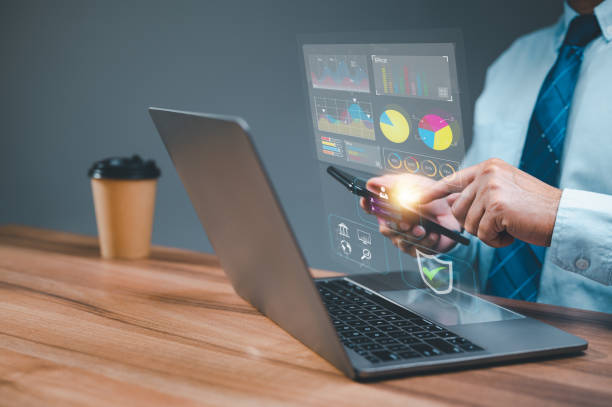
After implementing on-page SEO strategies, the next crucial step is continuous performance monitoring and analysis.
Without data monitoring, you cannot determine which strategies have been effective and which require improvement.
Tools like Google Search Console and Google Analytics are two powerful and free tools that provide valuable insights into your site’s performance in search results and user behavior.
In Google Search Console, you can check keyword performance, click-through rate, average ranking position, crawl and indexing issues, and Core Web Vitals status.
This information is vital for identifying opportunities and resolving technical issues.
For example, if you notice a particular page has a low click-through rate, you might need to optimize its title tag or meta description to increase its appeal.
Google Analytics also provides deep insights into user behavior on your site, including time on page, bounce rate, user flow, and traffic sources.
By analyzing this data, you can understand user behavioral patterns and improve your site’s content and structure accordingly.
For instance, if you observe users quickly leaving a specific page after entry, the content of that page might need revision, or its user experience might be unsuitable.
This continuous analytical process transforms on-page SEO into a dynamic process that is always improving.
This news-based and analytical approach enables you to make data-driven decisions and steer your internal website optimization strategy towards maximum efficiency.
Advanced On-Page SEO Strategies and Future Trends

With continuous advancements in search engine algorithms, on-page SEO is also constantly evolving.
Beyond the basics, there are more advanced strategies that can help you surpass competitors and prepare for the future.
One such strategy is focusing on comprehensive topic clusters.
Instead of writing separate articles for each keyword, you can organize your content around broad topics and link sub-pages (Cluster Content) to a central Pillar Page.
This structure helps Google better understand your expertise in a specific area and recognize semantic connections between your content.
Voice Search Optimization is also gaining increasing importance.
With the rise of voice assistants, searches are increasingly performed as long, conversational queries.
Therefore, your content should directly answer these questions and use natural language.
Artificial Intelligence and Machine Learning (AI & Machine Learning) will also play a significant role in the future of SEO.
Google’s algorithms like BERT and MUM have made significant progress in understanding search intent and linguistic complexities.
This means your content should focus more than ever on User Intent and provide comprehensive and accurate answers.
Analytical and specialized content that answers complex questions and solves user problems will gain increasing value in the future.
On-page SEO is no longer just about keywords; it’s about creating the best possible user experience and providing the most valuable answers to their needs.
By following these trends and continuously updating your knowledge, you can ensure that your internal website optimization strategy will always remain effective.
This specialized and analytical section addresses future trends in on-page SEO.
Frequently Asked Questions
| Question | Answer |
|---|---|
| What is Meta Title and why is it important in on-page SEO? | The meta title is the most important on-page SEO element displayed at the top of the browser tab and in search results. This title helps search engines and users understand the main topic of the page and should include the primary keyword. |
| What role does Meta Description play in on-page SEO? | The meta description is a short summary of the page’s content displayed below the title in search results. Although it does not directly affect ranking, its attractiveness can increase the click-through rate (CTR). |
| How should keywords be used in page content? | Keywords should be used naturally and relevantly in strategic places such as titles, headings, the first paragraph, and the body text. Avoid excessive keyword stuffing. |
| What is the importance of quality and comprehensive content in on-page SEO? | High-quality, unique, informative, and comprehensive content that addresses user needs is of great importance. Search engines give higher rankings to content that creates real value. |
| What is the use of heading tags (H1-H6) in on-page SEO structure? | Heading tags (H1, H2, H3, etc.) are used to structure content and indicate the importance of different sections. H1 is the main title of the page, and each page should only have one H1. Other tags are used for subheadings. |
| How to optimize images for improved on-page SEO? | To optimize images, use descriptive alt text that includes relevant keywords, reduce the image file size without significant quality loss, and use meaningful and relevant file names. |
| What are the characteristics of a user-friendly URL for on-page SEO? | A user-friendly URL should be short, readable, descriptive, include primary keywords, and be free of unnecessary characters. The URL structure should be hierarchical and logical to be understandable for both users and search engines. |
| How does internal linking help with on-page SEO? | Internal linking, by connecting related pages, helps users and search engine crawlers better understand the site structure, transfers page authority, and increases user time on site. |
| What is the impact of page load speed on on-page SEO? | High load speed is vital for both user experience and SEO ranking. Slower pages may be ignored by search engines and lead to an increased bounce rate. |
| Why is mobile-friendliness very important in on-page SEO? | Given the ever-increasing searches via mobile devices, having a responsive and mobile-friendly site is crucial for user experience and ranking in search results (Google’s Mobile-First Indexing). |
And other services of Rasaweb Advertising Agency in the field of advertising
Smart Reportage: A specialized service for SEO ranking improvement growth based on user experience customization.
Smart Social Media: Revolutionize click-through rate increase with attractive UI design.
Smart Direct Marketing: Professional optimization to boost sales using custom programming.
Smart Google Ads: Designed for businesses seeking to increase website traffic through custom programming.
Smart Reportage: A combination of creativity and technology for digital branding through key page optimization.
And more than hundreds of other services in the field of internet advertising, advertising consulting, and organizational solutions
Internet Advertising | Advertising Strategy | Advertorials
Sources
Faradid Internal SEO GuideWhat is Internal SEO or On-Page SEO? – Rank UpComplete Internal SEO Training – VirgoolWhat is Internal SEO (on page seo)? Zero to Hundred Training – Bahman Bakhshi
Are you ready for your business to leap forward in the digital world? Rasaweb Afarin Digital Marketing Agency assists you on your growth journey by offering innovative solutions in e-commerce website design, SEO, social media management, and branding. For a free consultation and to learn more about our services, contact our experts today.
📍 Tehran, Mirdamad Street, next to Bank Markazi, Kazeroun Jonoubi Alley, Ramin Alley No. 6


